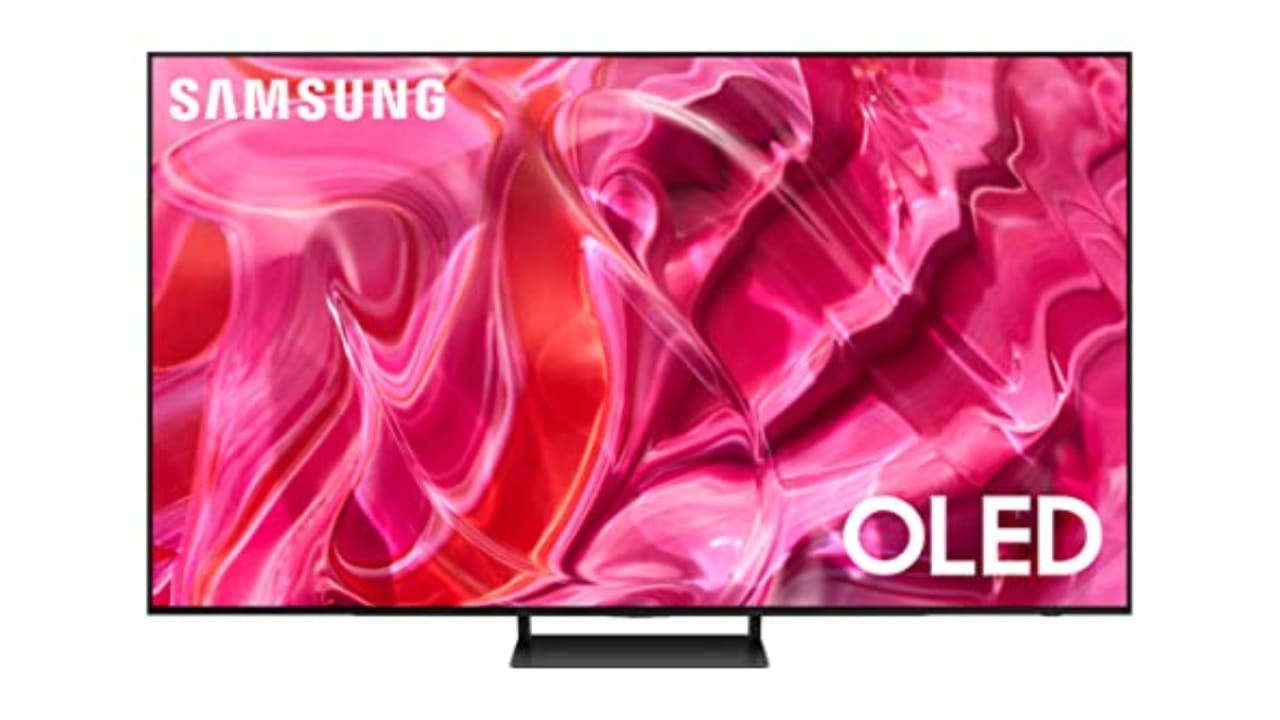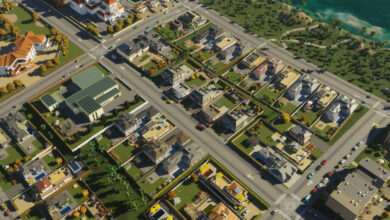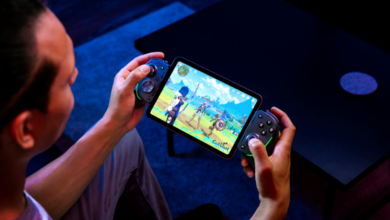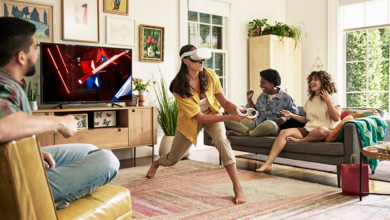How to choose the best TV for gaming right now
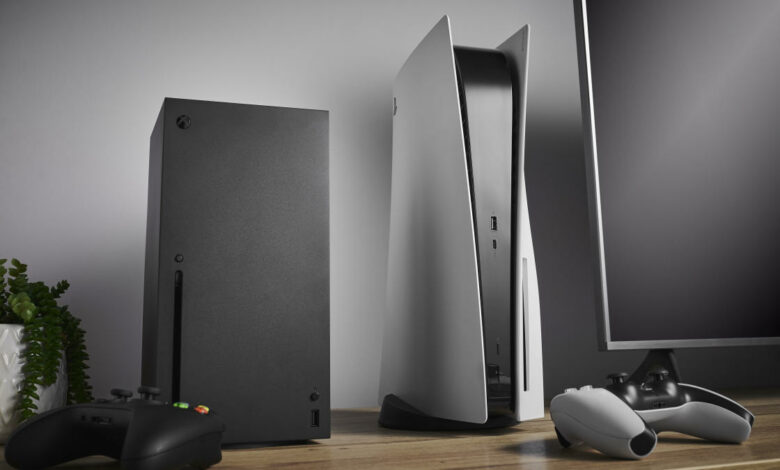
These days, the best gaming TVs are really no different from the best TVs you can buy in general. That said, there are a few key features to keep in mind when looking for a set to get the most out of your PlayStation 5 or Xbox Series X/S. No, you don’t need a fancy TV to simply enjoy a video game, but a good screen can only make the experience more enjoyable. If you’re unsure where to start, we’ve laid out some helpful advice for buying a good gaming TV and noted a few well-reviewed examples you can buy today, at various price points.
What to look for in a gaming TV
Whether you use it for gaming or not, all good TVs are built on the same foundations. You want a 4K resolution, sufficient brightness, high contrast ratios with deep and uniform black tones, colors that find the right balance between accuracy and saturation, and wide viewing angles. For video games specifically, you want a TV with minimal input lag and fast motion response, with no blur or other unwanted artifacts behind quick-moving objects. Of course, finding a set that has all of these gaming features and fits into your budget can be tricky.
For now, a top OLED TV will offer the best picture quality for gaming or otherwise. But good OLED TVs usually cost more than their LCD counterparts, and some OLED sets may not get bright enough for those who have their TV set in a particularly well-lit room. If you opt for an LCD TV, an advanced backlight with mini LEDs and effective full-array local dimming will usually improve contrast and lighting detail, while a quantum dot filter can enhance colors.
One thing you don’t need to worry about is 8K support. Although the PS5 and Xbox Series X are technically capable of outputting 8K video, very few games are made for that resolution, and 8K’s practical benefits are extremely minimal unless you plan on sitting unreasonably close to a massive TV. The few 8K TVs on the market are also very expensive.
All that said, there are a few terms you should particularly look out for when buying a TV for your new game console or high-end graphics card.
HDMI 2.1
To get the most out of a PlayStation 5 or Xbox Series X/S, your TV should have full HDMI 2.1 support. This is the latest major update to the HDMI spec, enabling a higher maximum bandwidth — 48 gigabits per second, up from HDMI 2.0’s 18 Gbps — and a handful of features that are beneficial for gaming performance specifically. These include variable refresh rate (VRR) and automatic low latency mode (ALLM), which we detail further below.
Beyond that, perhaps the chief perk of HDMI 2.1 is its ability to transmit sharp 4K video up to a 120Hz refresh rate with modern consoles like the PS5 and Xbox Series X, or up to 144Hz with a powerful gaming PC. Not every PS5 or Xbox Series X/S game supports frame rates that high — and some only do at lower resolutions — but those that do will look and feel especially fluid in motion. HDMI 2.1 also includes support for Enhanced Audio Return Channel (eARC), which allows you to pass higher-quality lossless audio from a source device connected to the TV to a compatible soundbar or receiver.
The more full HDMI 2.1 ports your TV has, the better. “Full” is the key word there. As reported by TFT Central, because HDMI 2.1 is backwards compatible with HDMI 2.0, TV and monitor manufacturers have been allowed to brand HDMI ports as “HDMI 2.1” even if they lack full (or any) support for the spec’s upgraded features. We recommend a few TVs below that have true HDMI 2.1 ports, but if you’re buying a new TV for gaming, make sure your chosen set isn’t trying to hide any capabilities you may consider essential.
HDR — High Dynamic Range
HDR refers to a TV’s ability to display a wider range between the darkest and brightest parts of a picture. This broader range can bring out details that would otherwise be missing on a standard dynamic range (SDR) TV, in both the very dark and, especially, the very bright areas of an image. HDR typically comes with an improvement to color reproduction as well, displaying a larger palette of more vibrant colors that brings content closer to its creator’s original vision.
To get an HDR picture, you need both content that is mastered to take advantage of the tech and a TV capable of displaying that content. HDR also comes in a variety of formats, which are generally split between those that utilize static metadata (e.g., HDR10) and those that utilize dynamic metadata (e.g., HDR10+, Dolby Vision). In short, the latter allows a TV to optimize its brightness and colors on a per-scene or even per-frame basis, while the former uses one set of optimized settings for the entirety of the given content. Support for these formats can differ depending on the TV, content and game console you use. The Xbox Series X and S, for example, support Dolby Vision for gaming, while the PS5 does not.
The good news is that most TVs you’d buy in 2023 are HDR-ready in some fashion, even on the budget end of the market. The catch is that some TVs are much better at getting the most out of HDR than others. The same goes for actual content mastered in HDR. With video games in particular, there aren’t quite as many titles designed to take advantage of HDR as there are movies (though the number is growing all the time), and the variance in HDR quality tends to be wider.
HGiG — HDR Gaming Interest Group
HGiG stands for the HDR Gaming Interest Group. Sony and Microsoft are both members, as are many TV makers and game developers. What this means is that, ideally, all the groups communicate information so that you can start up a new game on a console or PC and have it automatically recognize your display. Once that happens, the game can adjust the internal settings to adjust for that display’s capabilities and give you the best picture quality possible, without losing details in the brightest or darkest areas of the screen. For example, daylight at the end of a dark tunnel may portray a brightly lit environment instead of looking like an overexposed white blob.
This is a good thing, but the reality is a bit more complicated. Not all TVs highlight HGiG compatibility in their settings menu, while only some PlayStation and Xbox games recognize and follow the guidelines. If an HGiG option is listed in your TV’s tone mapping settings, you should turn it on prior to running the console’s HDR settings. Then, if you’re playing a game that supports HDR and HGiG, you should be in good shape without having to adjust the various luminance levels again. Still, how all of this looks to you might differ depending on your TV and the game you’re playing. Owners of certain LG OLED TVs, for instance, may prefer their TV’s Dynamic Tone Mapping setting. Use whatever settings you think look best.
ALLM — Auto Low Latency Mode
ALLM allows a source (like your PS5 or Xbox) to tell the display to switch into a picture mode that reduces lag between receiving each frame of an image and displaying it on the TV. This cuts out additional processing that could be the milliseconds of difference between landing a precise input or not. A good modern TV can automatically switch to game mode, then back out when you’d rather watch a movie or TV show.
VRR — Variable Refresh Rate
VRR will sound familiar if you’re a PC gamer. Most players have experienced slowdown, screen tearing or stuttering as a system struggles to render each frame at the target speed, which is most commonly 30 or 60 fps on a TV. With VRR, everything stays in sync: Your display won’t show the next frame until it’s ready, which can make things feel smoother and more responsive, even if the system fails to deliver on its target frame rate.
There are a few different implementations of VRR available, including Nvidia’s G-Sync, AMD’s FreeSync and the HDMI Forum’s VRR spec, which is part of the full HDMI 2.1 standard. Both a TV and an input device need to support the same VRR tech for it to work, and different devices may only support VRR within a specific refresh rate window. On a 120Hz display, for instance, the PS5’s VRR only works between 48Hz and 120Hz.
As a reminder, the PS5 supports HDMI Forum VRR, the Xbox Series X/S support HDMI Forum VRR and FreeSync, while gaming PCs may support G-Sync or FreeSync depending on whether they use a Nvidia or AMD graphics card. A great gaming TV supports all the big VRR formats, but missing, say, G-Sync, isn’t a killer if you only game on a PS5 or Xbox.
Good gaming TVs you can get right now
The likes of Samsung, LG, TCL, Vizio and Hisense have unveiled new TVs for 2024 but, as of this writing, we’ve only recently started to see the first few of those become available. Details for more new models should be confirmed in the coming weeks. If history is any indication, though, most of those sets are unlikely to be game-changing upgrades over the 2023 models still on sale today, and they’ll cost more out of the gate. We’ll have to see if there are exceptions, of course: Samsung’s new S95D OLED TV now uses anti-glare technology, for instance, while Hisense promises improved brightness across its new midrange sets. If you want the latest and greatest and are willing to pay more to get it, hold out for a little longer.
But the TV market is always in motion. Most of the best models from last year have steadily fallen in price since launch, and they should only drop further as manufacturers look to clear out inventory. This means that, in most cases, buying a good 2023 TV should continue to provide the most bang for your buck, at least for the near term. Those are the sets we’ve highlighted with our recommendations below. While we at Engadget do not formally review TVs, we’re confident in our picks after thoroughly researching user feedback and the consensus from other professional review sites we trust, such as Rtings, Wirecutter, Reviewed and PCMag, among others.
Screen sizes: 55″, 65″, 77″, 83″ | Display type: QD-OLED | Resolution: 4K | Maximum refresh rate: 144Hz (120Hz on 83″) | HDR formats: HDR10, HDR10+, HLG | HDMI ports: 4x HDMI 2.1 | VRR: HDMI Forum VRR, FreeSync Premium, G-Sync compatible | Smart OS: Tizen | Screen form: Flat | ALLM: Yes | TV tuner: ATSC 3.0
The Samsung S90C has a QD-OLED display that combines an OLED panel with a layer of quantum dots. This allows it to display the high contrast and deep blacks of any good OLED TV without sacrificing as much in the way of peak brightness or color saturation. It should deliver consistently smooth motion, and it has four HDMI 2.1 ports that can play up to 4K 144Hz. It also supports HDR10 and HDR10+, ALLM and the major VRR formats. Sizes range from 55 to 83 inches. Like the rest of Samsung’s TV lineup, however, it doesn’t work with Dolby Vision HDR.
We’ll also note the Samsung S95C, a higher-end model. It, too, can play in 4K up to 144Hz, and some reviews say it can get a bit brighter than the S90C in HDR. Since it runs its ports through an external box, its actual hardware is thinner as well. But it’s significantly more expensive, so it’s harder to justify unless money is no object. The aforementioned S95D OLED TV, Samsung’s flagship for 2024, may be a more meaningful upgrade, though it’s only just become available and costs even more.
- High contrast with deep blacks
- Good brightness
- Available in sizes up to 83 inches
- Does not support Dolby Vision HDR
Screen sizes: 42″, 48″, 55″, 65″, 77″, 83″ | Display type: WOLED | Resolution: 4K | Maximum refresh rate: 120Hz | HDR formats: Dolby Vision, HDR10, HLG | HDMI ports: 4x HDMI 2.1 | VRR: HDMI Forum VRR, FreeSync, G-Sync certified | Smart OS: webOS | Screen form: Flat | ALLM: Yes | TV tuner: ATSC 1.0
The LG C3’s WOLED panel can’t get as bright as a QD-OLED TV like the Samsung S90C, but it still performs excellently in terms of contrast, input lag, motion response and viewing angles. It’s occasionally available for a little bit less than the S90C, too. It follows the HGiG’s HDR guidelines, supports ALLM, works with all the major VRR formats and has four full HDMI 2.1 ports capable of outputting 4K 120Hz with a PS5, Xbox or PC. It also supports all the major HDR standards, including Dolby Vision, and it’s available in a wide variety of sizes, from 42 to 83 inches. It’s just less ideal in a brightly-lit room, and it doesn’t support a 144Hz refresh rate for those who may want to get the most out of a gaming PC.
- High contrast with deep blacks
- Supports Dolby Vision
- Available in sizes up to 83-inches
- Not as bright as QD-OLED TVs
- Does not support 144Hz refresh rates
Screen sizes: 43″, 50″, 55″, 65″, 75″, 85″ | Display type: QLED with mini-LED backlight (VA panel on 43″ and 50″, ADS panel on 55″ and up) | Resolution: 4K | Maximum refresh rate: 120Hz (144Hz on 43″ and 50″) | HDR formats: HDR10, HDR10+, HLG | HDMI ports: 4x HDMI 2.1 | VRR: HDMI Forum VRR, FreeSync Premium Pro, G-Sync compatible | Smart OS: Tizen | Screen form: Flat | ALLM: Yes | TV tuner: ATSC 3.0
If you need the improved brightness of a LCD TV, or if you think you might play one game (extremely) long enough to worry about burn-in, consider the Samsung QN90C. It can’t match the contrast, response time or viewing angles of a good OLED model, but its mini-LED backlight and quantum-dot color should make for a richer image than most LCD TVs, particularly in HDR. Its motion and input lag shouldn’t cause problems either, and it can get much brighter than the models mentioned above. It still doesn’t support Dolby Vision, but it has four full HDMI 2.1 ports, ALLM and all the big VRR formats. It also comes in several screen sizes, with the 43- and 50-inch models capable of hitting a 144Hz refresh rate. The rest go up to 120Hz, which is the max for a PS5 or Xbox Series X/S. The 43- and 50-inch versions of these TVs use VA panels, though, which should result in better contrast but worse viewing angles.
The Sony X93L is another highly-rated premium LED TV that does support Dolby Vision, albeit at 60Hz only, and can auto-calibrate HDR on a PS5. It has two fewer HDMI 2.1 ports than the QN90C, however, which makes it a tighter fit for those with multiple gaming devices, and its size range starts at 65 inches.
- Good mini-LED backlight
- Quantum-dot color
- Available in sizes up to 85 inches
- Does not support Dolby Vision
Screen sizes: 55″, 65″, 75″, 85″, 100″ | Display type: QLED with mini-LED backlight (ADS Pro panel on 75″, VA panel on others) | Resolution: 4K | Maximum refresh rate: 144Hz | HDR formats: Dolby Vision, HDR10, HDR10+, HLG | HDMI ports: 2x HDMI 2.1, 2x HDMI 2.0 | VRR: HDMI Forum VRR, FreeSync Premium Pro, G-Sync compatible | Smart OS: Google TV | Screen form: Flat | ALLM: Yes | TV tuner: ATSC 3.0
The TVs above are all pretty expensive. If you’re on more of a budget, the Hisense U8K, another QLED TV with mini LEDs, should be a strong value. It may not be a better gaming TV than the QN90C in a vacuum, as it only has two full-fat HDMI 2.1 ports, and its image will wash out more dramatically when viewed from an angle. But reviews suggest that, for a few hundred less, it’ll still look good in any lighting environment, with impressive brightness levels, 4K 144Hz support, all the main HDR formats, VRR, ALLM and low-enough input lag in game mode. You’ll still sacrifice contrast compared to a good OLED TV, however, and motion won’t look quite as fast or smooth.
The TCL QM8 looks to be an impressive QLED option in this price range as well. It can get a little brighter than the U8K and supports up to a 144Hz refresh rate in 4K or a super-fast 240Hz in 1080p. Unlike the Hisense model, it also keeps its eARC port separate from its two HDMI 2.1 ports, which means you could keep a PS5, Xbox Series X and eARC-compatible soundbar hooked up and optimized without ever having to mess around with inputs. Its smallest size is 65 inches, though, and a few reviews say it’s a bit worse than the U8K at upscaling lower-resolution content, which may affect those looking to play retro consoles.
If you want to pay a little less, meanwhile, the Hisense U7K offers a similar set of gaming features as its higher-end sibling but isn’t as bright or vivid.
- Affordable
- Good viewing angles
- 4K 144Hz support
- Contrast isn’t as good as that of an OLED TV
Screen sizes: 55″, 65″, 75″ | Display type: QLED with mini-LED backlight | Resolution: 4K | Maximum refresh rate: 60Hz | HDR formats: Dolby Vision, HDR10, HDR10+, HLG | HDMI ports: 4x HDMI 2.0 | VRR: HDMI Forum VRR, FreeSync compatible, G-Sync compatible | Smart OS: Google TV | Screen form: Flat | ALLM: Yes | TV tuner: ATSC 1.0
On the lower end of the price spectrum, the Hisense U6K is the rare budget-level TV with quantum-dot color, a mini-LED backlight and full-array local dimming. Various reviews say all of this helps it deliver better contrast and color volume than most value-oriented models. ALLM and the major HDR standards are supported as well. Technically, it’s also a VRR display — but, like many cheaper TVs, the U6K is limited to a 60Hz refresh rate, so that support only goes so far. There are no HDMI 2.1 ports either, and the TV’s brightness levels and motion handling will still be a clear step down from more expensive options. But at $350 or so for a 55-inch model, those issues should be easier to overlook.
The TCL Q5 is another notable budget option, as it’s one of the few cheap TVs that can play up to 120Hz, albeit only at a 1080p or 1440p resolution. It lacks a local dimming feature and the U6K’s mini- LED backlight, but for competitive-minded gamers who are willing to trade some sharpness and picture quality for a more responsive image, it could be a decent value. The same sentiment should apply to the TCL Q6, which offers slightly higher brightness levels but costs a bit extra.
- Affordable
- Mini-LED backlight
- Quantum-dot color
- Limited to 60Hz refresh rates
- No HDMI 2.1 ports
Richard Lawler contributed to this report.
Source link

